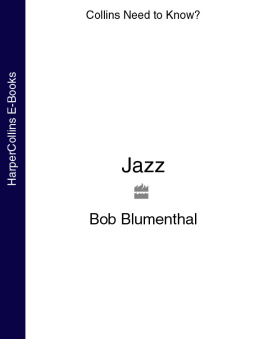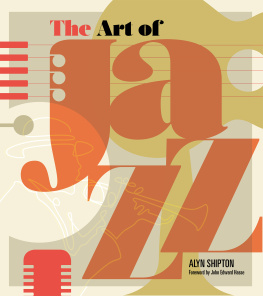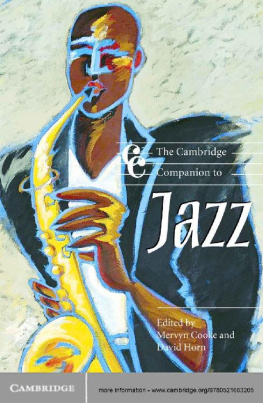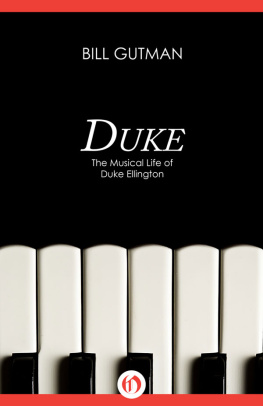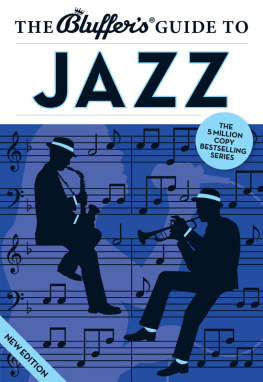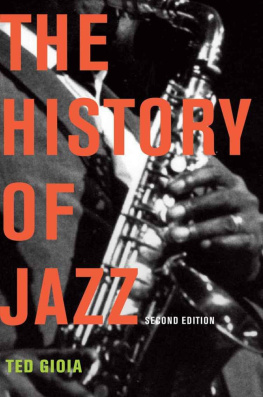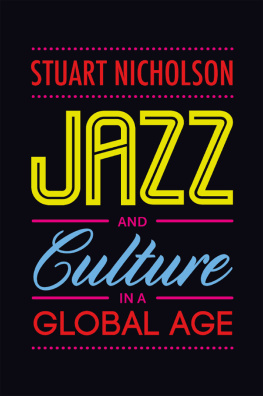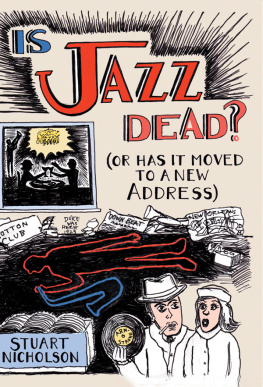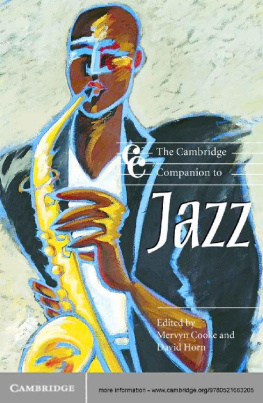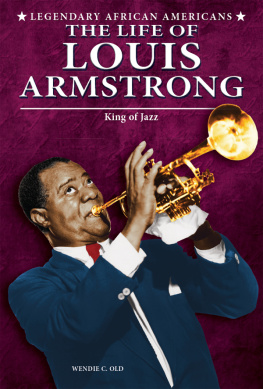
To Dear Kath (and Gwladys)
Contents
Somehow its impossible to feel neutral about jazz. Love it or hate it, it always seems to provoke strong emotions. Depending on your point of view it can be downmarket or upmarket, monotonous or momentous, baffling or blatant and its been that way since its emergence in the early years of the twentieth century. Its arrival couldnt have been better timed. Commercial radio was spreading across the United States and would bring jazz into the homes of millions, while the sales of recorded music were taking off in a big way, not just in America but around the world. As soon as a recording came out in the United States, the rest of the world got to hear it within weeks. As cultural historian Donald Sassoon has pointed out, The spread of jazz in the 1920s was the first great trend in music history to occur mainly through recording. and today the jazz world is singing in just such a way, creating a rich and diverse music that speaks of its continuing vibrancy into the twenty-first century.
Jazz: A Beginners Guide is a step-by-step guide to help you get the most out of listening to this remarkable music. It has its roots in a course I was invited to give some years ago at a college of further education. It was an experience I greatly valued and the students responses, observations and suggestions plus the notes and modifications I made as the course progressed have coloured my thinking on what follows. The first thing that I quickly learned was that when we hear a new piece of music for the first time we subconsciously compare it with what we know so as to form an opinion about it, but if weve not heard anything like it before then were not certain what to think. So when I played the students tracks jazz aficionados fondly imagine will make believers out of non-believers I was greeted with looks of polite bewilderment, since their previous listening experiences had not encompassed the kind of music they were now hearing. Clearly a more cautious musical approach was needed, and I soon came up with a selection of tracks that they found interesting and engaging, and by the end of the first semester I was more than pleasantly surprised by how quickly they had embraced jazz, formed their own musical preferences and were talking about their favourite recordings like experts!
Although there is no magic switch to instantly improve our understanding of music with which we are unfamiliar, we do know our ability to understand music has been subconsciously developing below our threshold of conscious perception throughout our lifetime, beginning in our mothers womb. By the sixth month of pregnancy an in utero baby becomes aware of auditory stimulation and it appears that after twenty-eight weeks the majority of foetuses can detect frequency changes in the range of 250Hz.
Music researchers tell us that our early listening habits are influenced by osmosis, or the gradual and unconscious assimilation of the music were surrounded with as we grow up. By our early teenage years, we are surprisingly sure about music that conforms to our taste expectations and are equally sure about music that does not. You might think that these musical preferences are set in stone, but theyre not. Of course, whether we decide to broaden our musical taste as we get older is an entirely personal decision, but modern research tells us that our auditory, cognitive and motor functions are well able to undertake this through active listening, when parts of the brain that evolved for other purposes such as language, skill learning and auditory analysis are gradually co-opted into doing something new. So, whatever misgivings you might be harbouring about getting into jazz you need a music degree to understand whats going on, or its a difficult listen then you can comfortably forget about them, as youre actually better equipped to get into jazz than you thought.
Throughout this book Ive been very conscious of how the digitization of recorded sound has created a cultural landscape quite unlike anything in the past, or even the near past. Today, the immediacy of the Internet and the portability and sophistication of laptops, tablets, iPods and 4G smartphones means were all able to engage with computer games, social networking sites, movies or music at any time of the day or night. And when it comes to music, chances are many of us listen to it on the go. Its a trend that shows no sign of slowing with sales of mobile MP3 players growing exponentially year by year, yet most people would probably be surprised offended even to learn that when consuming music in this way the act of listening ceases to be exclusive and the prime focus of their attention, but instead becomes inclusive as we interact with reality around us.
For many, music today is overheard rather than listened to a way of avoiding the silence of the daily commute, the daily jog or doing the housework, functioning as a form of sonic wallpaper that [provides] an undemanding backdrop to some other task. Yet music demands emotional investment to realise its potential, so if we become more aware of the benefits of listening well and knowing why this is worth achieving, well be taking a vital step towards getting more out of our listening experiences.
We all come to music with a certain amount of baggage what we prefer to listen to, how we like to listen to it, when we like to listen to it, where we like to listen to it and what we expect of it. Clearly there isnt a correct way to listen and engage with music because its such a subjective and personal experience. Everybodys different, but there seems no virtue in assuming the relativist position that everyones way of listening to music is equally valid, because if all perspectives have equal validity then a limitless plurality of values is indistinguishable from no values at all. This may mean acknowledging some music is not intended for, or indeed suited to, secondary listening and demands active or engaged, rather than passive, listening. Dont forget, a perpetual background of music to which little serious attention is paid can have the effect of actually diminishing the listening experience, so the more you put into listening to jazz when its the sole focus of your attention, the quicker youre likely to get into it.
As we listen, certain musical characteristics are subconsciously stored in our long-term memory as schema think of them as templates of previous listening experiences. The more a piece of music conforms to the templates of music weve previously enjoyed, the more were inclined to like it and correspondingly, the more a performance conforms to templates of music we havent liked, then the more were likely to give it a miss. As the cognitive psychologist and neuroscientist Daniel Levitin has pointed out, Our ability to make sense of music depends on experience, and on neural structures that can learn and modify themselves with each new song we hear, and with each new listening to a new song.
Encountering a new piece of music is analogous to meeting a new colleague at work; in both instances increased familiarity often brings greater understanding; for example, X is a much nicer and more interesting person than I first thought. The key, of course, is taking the time and trouble to get to know someone; indeed, studies by Jay Dowling and his colleagues demonstrate how our memory for music develops over time initially we get an overall picture of the song and with more exposure, more and more details are subconsciously filled in on our musical template. Sometimes it takes a while to build a good musical memory of a piece, but once its done it can be strong and long-lasting. The key factor here is that with repetition comes familiarity. Its perhaps no coincidence that in sport, business, religion and philosophical disciplines, goals are often achieved by repetitive affirmation.


